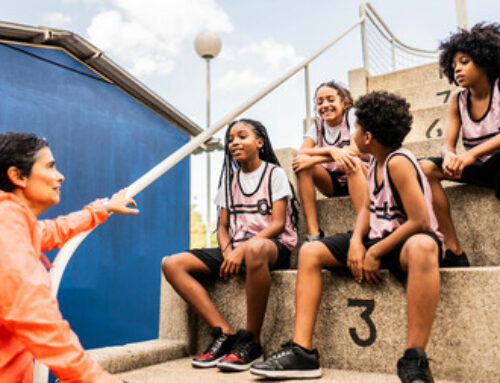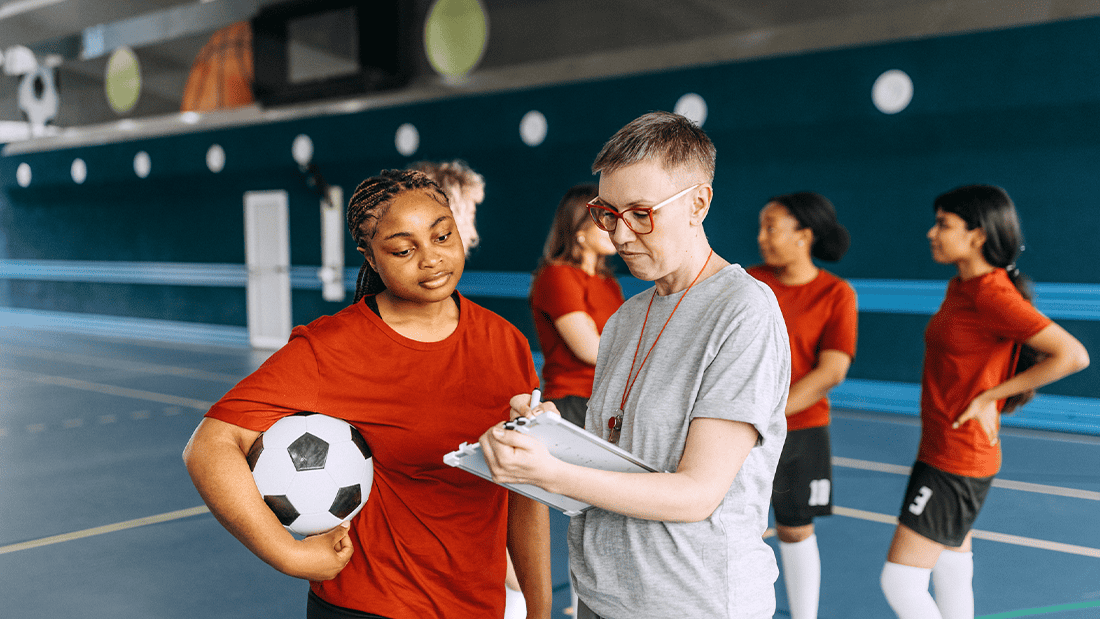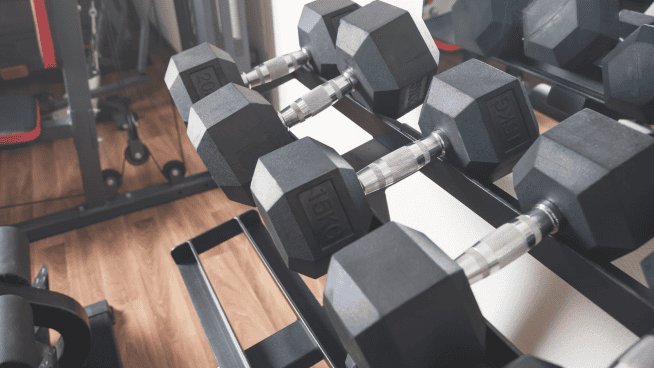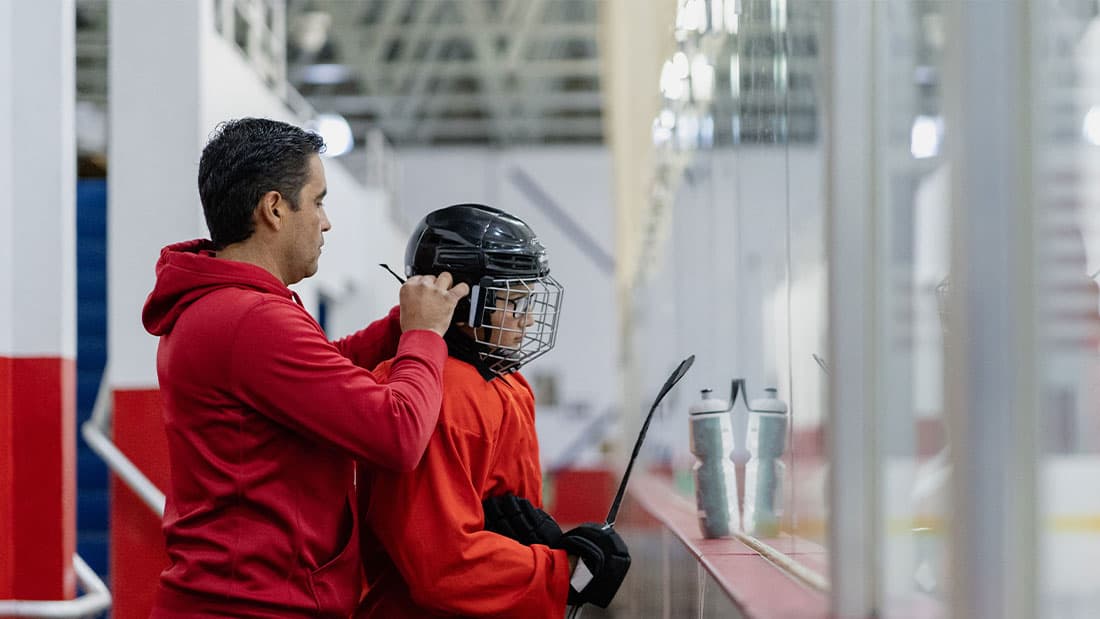What Soccer Players Need for Physical and Mental Programming During COVID-19
You wake up disoriented.
You wonder what you should do.
You do not know where to begin.
Should it be stillness?
Should it be schoolwork?
Should it be fitness training?
As your mind wonders, you decide to scroll your Instagram feed so you can distract your disarray of thoughts.
However, it adds to the chaos even more.
You see a cluster of workouts, from bodyweight circuits, to at-home programs, to backyard drills, to free eBooks.
The noise on social media is deterring you from dialing in your focus, what is important physically and mentally as an athlete now.
You are left more confused on how to approach your training during this global pandemic.
It is frustrating, I know.
First off how are you? Before I dive in on the importance of a physical training program during this time off from sports, how are you feeling? How are you coping? What do you need now? What motivates you? What uplifts you? Has anyone even asked, especially your coaches?
When the world flipped upside down, sports got cancelled, schools shut down, and quarantine became the way of living. Worse yet, a bevy of fitness influencers rushed the online space to deliver free workouts and crowd the feed with chaos.
Of course I understand the sentiment and willingness to give as much as possible (I was guilty of it), especially during a time where money is tight, and people are going through layoffs and income cuts.
This is not about free stuff.
This is about routine and leadership.
As an athlete, first and foremost, it’s critical to settle in and become aware of what you need now. Chances are, if you are lost, anxious and fearful, the last thing you need is more stuff thrown your way that you do not know how to piece together.
Your brains love routine, structure and accountability. As athletes, you are used to set practice and training times, being told how to lay out your sets, reps and load progressions. You thrive on organization as well as good old-fashioned coaching. Keep this in mind. This time is about you and what you need to ease your soul, as well as to be successful when you return to play.
Speaking of return to play, it is going to be serious when it eventually happens. Truthfully, it could be one, two, three or four months and beyond from now. What are you doing to prepare for the demands of that first 90-minute match back? What are you doing to ensure your muscles can handle fatigue? What are you doing to maintain blistering speed?
Let me dive in on the physical priorities now.
1. Speed
Now is the time to stay explosive. Do not let your speed wither away, especially because it is the first thing to go with cessation from training.
It is amazing that you have your front or back yard to get in 10-yard, 20-yard and 30-yard sprints now.
Some things to keep in mind:
- Train your speed 2x-3x a week.
- Time everything; compete with your times each week.
- Rest for longer than 60-90 seconds so you are training the Phosphagen energy system.
- Start general (linear starts), then progress to specific (multi-planar starts).
2. Aerobic Capacity
Since games and practices have come to a halt, aerobic training has significantly taken a backseat. Going for a light run or bike ride are the best options now to do a few times a week to maintain a nice aerobic base.
Adding to the lower intensity cardio list, walks are great for recovery days, especially mentally, due to tapping into the parasympathetic nervous system.
3. Power
Jump, hop, bound and leap often right now. Fast twitch muscle fibers wane the quickest, so how are you staying explosive?
The good news is plyometrics require a small space so you can do your vertical and broad jumps indoors or in your backyard.
4. Total-Body Strength
The last thing to diminish will be total-body strength. Right now soccer players are not as exposed to cutting, sprinting and the most quadricep-, gluteal- and hamstring-heavy movements in the game.
Here are two to do at home to keep the strength:
Of course load would eventually need to be added to continue to give the body an adaptation and to truly build strength back up.
Expounding further, keep incorporating upper-body movements. In fact use this time to hone in on them so you can improve your posture, core stability and body composition.
Here is a sample template to provide you with structure:
Day 1: Total Body Strength
A1) Goblet Split Squat 4×6
A2) Pull-Up 3xAMRAP
A3) Explosive Broad Jump 2×3 (measured)
B1) Banded Good Morning 2×8
B2) Clock Push-Ups 2×1 clockwise, 1 counterclockwise
B3) Renegade Row 2×10 each
C1) Hollow Hold 3×30 seconds
C2) Plank Rotations 3×30 seconds
D1) Bird Dog 2×10
D2) SL Bridge Hold 2×30 seconds each
D3) Multi-Directional Mini Band Walks 2×30 steps
Day 2: Speed
Dynamic Warm-Up (10 minutes)
Forward Crawl x 20 yards
Forward Skip x 20 yards
(2x)
Kneeling Acceleration Leans (10 each with focus on loading ball of foot)
Kneeling Arm Swings (3 sets, 10 seconds fast with focus on looking straight ahead, good posture, elbows at 80-90 degrees with aggressive swing)
Timed 10-yard sprint (2x with 60-second rest)
Timed 10-yard sprint kneeling (2x with 60 second rest)
Timed 20-yard sprint (2x with 90-second rest)
Timed 30-yard sprint (2x with 90-second rest)
Now that you have an organized strength and speed template, let us take a look at several things to work on mentally.
Make time for stillness
You have permission to slow down. The beauty of this downtime is to also make time to sit with yourself and your thoughts, as you may not get it again when school and sports enter back into the equation. Also, be forgiving of yourself when you do take time to relax. You do not need to always be productive and busy to be useful.
Do hobbies beyond sport
What else do you enjoy? What else are you good at? It cannot just be school and soccer!
You are a multi-dimensional human, after all, and I urge you to be aware of your potential in other aspects of life.
All of you have amazing gems buried deep inside you, I know.
Explore them.
Connect with friends and family
Checking in on your people is critical during this time to ensure they are safe and healthy, as well as loved in isolation.
It is never easy being stuck at home not being able to hang out with your friends, so prioritize seeing them on a video call each week.
Write down your accomplishments and strengths
Take this time to reflect on how awesome you are. Whether this is jotting down your year’s achievements in a journal, or speaking out loud your talents. Rarely do you get the time to pat yourself on the back, so do so now and recognize yourself now that you have stepped out of the rat race of society.
I hope this article spoke to you. I hope you find your power physically and mentally now, and settle into a routine that is empowering, strengthening, and solacing.
Stay strong, but more importantly, stay safe.
Photo Credit: RichVintage/iStock
READ MORE:
RECOMMENDED FOR YOU
MOST POPULAR
What Soccer Players Need for Physical and Mental Programming During COVID-19
You wake up disoriented.
You wonder what you should do.
You do not know where to begin.
Should it be stillness?
Should it be schoolwork?
Should it be fitness training?
As your mind wonders, you decide to scroll your Instagram feed so you can distract your disarray of thoughts.
However, it adds to the chaos even more.
You see a cluster of workouts, from bodyweight circuits, to at-home programs, to backyard drills, to free eBooks.
The noise on social media is deterring you from dialing in your focus, what is important physically and mentally as an athlete now.
You are left more confused on how to approach your training during this global pandemic.
It is frustrating, I know.
First off how are you? Before I dive in on the importance of a physical training program during this time off from sports, how are you feeling? How are you coping? What do you need now? What motivates you? What uplifts you? Has anyone even asked, especially your coaches?
When the world flipped upside down, sports got cancelled, schools shut down, and quarantine became the way of living. Worse yet, a bevy of fitness influencers rushed the online space to deliver free workouts and crowd the feed with chaos.
Of course I understand the sentiment and willingness to give as much as possible (I was guilty of it), especially during a time where money is tight, and people are going through layoffs and income cuts.
This is not about free stuff.
This is about routine and leadership.
As an athlete, first and foremost, it’s critical to settle in and become aware of what you need now. Chances are, if you are lost, anxious and fearful, the last thing you need is more stuff thrown your way that you do not know how to piece together.
Your brains love routine, structure and accountability. As athletes, you are used to set practice and training times, being told how to lay out your sets, reps and load progressions. You thrive on organization as well as good old-fashioned coaching. Keep this in mind. This time is about you and what you need to ease your soul, as well as to be successful when you return to play.
Speaking of return to play, it is going to be serious when it eventually happens. Truthfully, it could be one, two, three or four months and beyond from now. What are you doing to prepare for the demands of that first 90-minute match back? What are you doing to ensure your muscles can handle fatigue? What are you doing to maintain blistering speed?
Let me dive in on the physical priorities now.
1. Speed
Now is the time to stay explosive. Do not let your speed wither away, especially because it is the first thing to go with cessation from training.
It is amazing that you have your front or back yard to get in 10-yard, 20-yard and 30-yard sprints now.
Some things to keep in mind:
- Train your speed 2x-3x a week.
- Time everything; compete with your times each week.
- Rest for longer than 60-90 seconds so you are training the Phosphagen energy system.
- Start general (linear starts), then progress to specific (multi-planar starts).
2. Aerobic Capacity
Since games and practices have come to a halt, aerobic training has significantly taken a backseat. Going for a light run or bike ride are the best options now to do a few times a week to maintain a nice aerobic base.
Adding to the lower intensity cardio list, walks are great for recovery days, especially mentally, due to tapping into the parasympathetic nervous system.
3. Power
Jump, hop, bound and leap often right now. Fast twitch muscle fibers wane the quickest, so how are you staying explosive?
The good news is plyometrics require a small space so you can do your vertical and broad jumps indoors or in your backyard.
4. Total-Body Strength
The last thing to diminish will be total-body strength. Right now soccer players are not as exposed to cutting, sprinting and the most quadricep-, gluteal- and hamstring-heavy movements in the game.
Here are two to do at home to keep the strength:
Of course load would eventually need to be added to continue to give the body an adaptation and to truly build strength back up.
Expounding further, keep incorporating upper-body movements. In fact use this time to hone in on them so you can improve your posture, core stability and body composition.
Here is a sample template to provide you with structure:
Day 1: Total Body Strength
A1) Goblet Split Squat 4×6
A2) Pull-Up 3xAMRAP
A3) Explosive Broad Jump 2×3 (measured)
B1) Banded Good Morning 2×8
B2) Clock Push-Ups 2×1 clockwise, 1 counterclockwise
B3) Renegade Row 2×10 each
C1) Hollow Hold 3×30 seconds
C2) Plank Rotations 3×30 seconds
D1) Bird Dog 2×10
D2) SL Bridge Hold 2×30 seconds each
D3) Multi-Directional Mini Band Walks 2×30 steps
Day 2: Speed
Dynamic Warm-Up (10 minutes)
Forward Crawl x 20 yards
Forward Skip x 20 yards
(2x)
Kneeling Acceleration Leans (10 each with focus on loading ball of foot)
Kneeling Arm Swings (3 sets, 10 seconds fast with focus on looking straight ahead, good posture, elbows at 80-90 degrees with aggressive swing)
Timed 10-yard sprint (2x with 60-second rest)
Timed 10-yard sprint kneeling (2x with 60 second rest)
Timed 20-yard sprint (2x with 90-second rest)
Timed 30-yard sprint (2x with 90-second rest)
Now that you have an organized strength and speed template, let us take a look at several things to work on mentally.
Make time for stillness
You have permission to slow down. The beauty of this downtime is to also make time to sit with yourself and your thoughts, as you may not get it again when school and sports enter back into the equation. Also, be forgiving of yourself when you do take time to relax. You do not need to always be productive and busy to be useful.
Do hobbies beyond sport
What else do you enjoy? What else are you good at? It cannot just be school and soccer!
You are a multi-dimensional human, after all, and I urge you to be aware of your potential in other aspects of life.
All of you have amazing gems buried deep inside you, I know.
Explore them.
Connect with friends and family
Checking in on your people is critical during this time to ensure they are safe and healthy, as well as loved in isolation.
It is never easy being stuck at home not being able to hang out with your friends, so prioritize seeing them on a video call each week.
Write down your accomplishments and strengths
Take this time to reflect on how awesome you are. Whether this is jotting down your year’s achievements in a journal, or speaking out loud your talents. Rarely do you get the time to pat yourself on the back, so do so now and recognize yourself now that you have stepped out of the rat race of society.
I hope this article spoke to you. I hope you find your power physically and mentally now, and settle into a routine that is empowering, strengthening, and solacing.
Stay strong, but more importantly, stay safe.
Photo Credit: RichVintage/iStock
READ MORE:













